(NLDO) - A group of astronomers has studied where the powerful beams from these 10-billion-year-old black holes have been and are heading.
Using NASA's Chandra X-ray Observatory, the National Science Foundation's (NSF) National Radio Astronomy Observatory (NRAO), and the Very Large Baseline Array (VLBA), an international team of scientists observed 16 raging black holes, according to NASA news.
They are all monster black holes at the centers of galaxies.
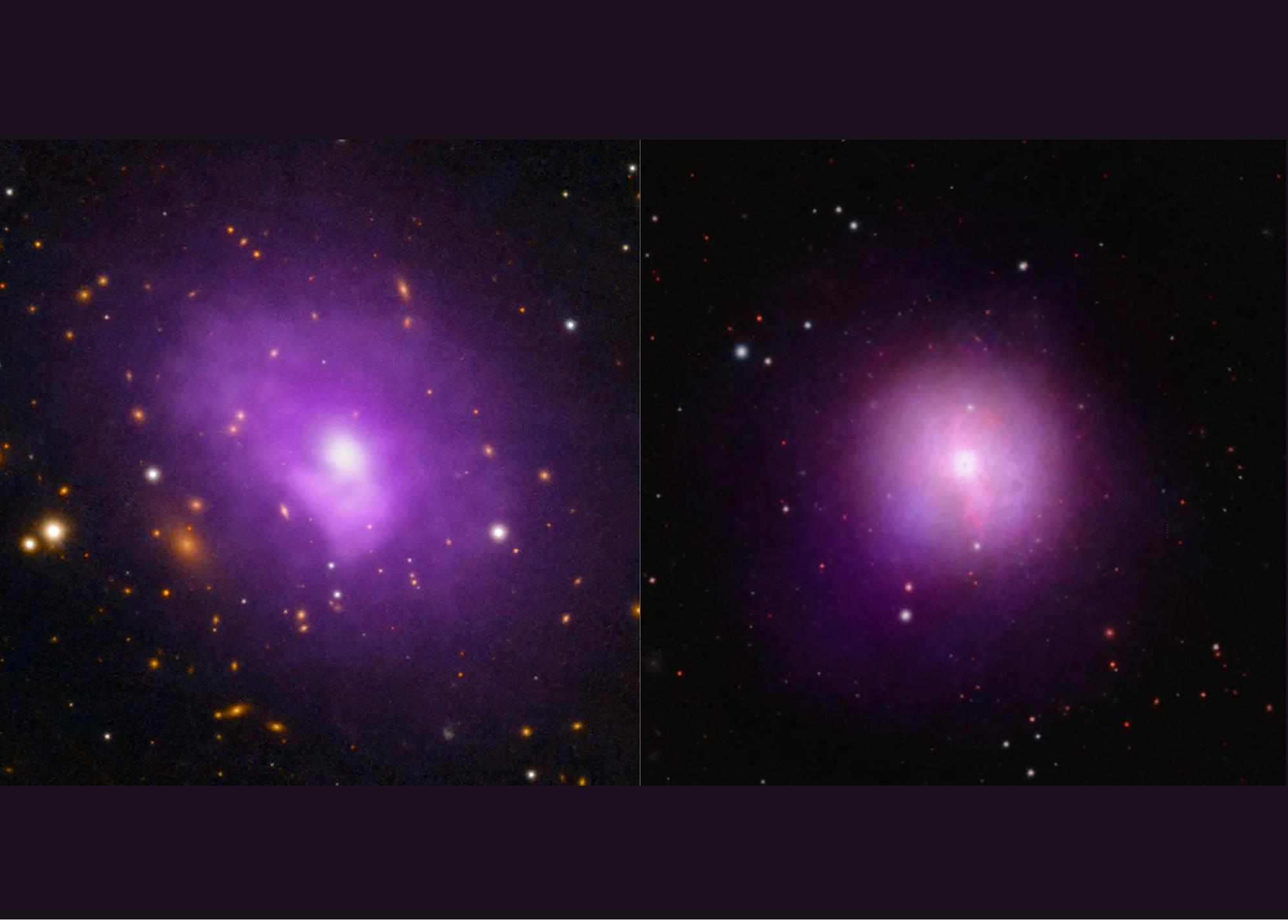
Abell 478 and NGC 5044, home to two monster black holes that constantly "spin" - Photo: NASA
Unlike the dormant monster Sagittarius A* of the Milky Way galaxy, the 16 black holes mentioned above are still devouring matter vigorously and shooting terrible jets of matter across space.
In the new study, a US-Italian team led by Dr. Francesco Ubertosi from the University of Bologna (Italy) even discovered that these black holes are constantly changing direction.
Publishing the results in the scientific journal The Astrophysical Journal, the authors used as examples two black holes located in the galaxy cluster Abell 478 and the galaxy group NGC 5044.
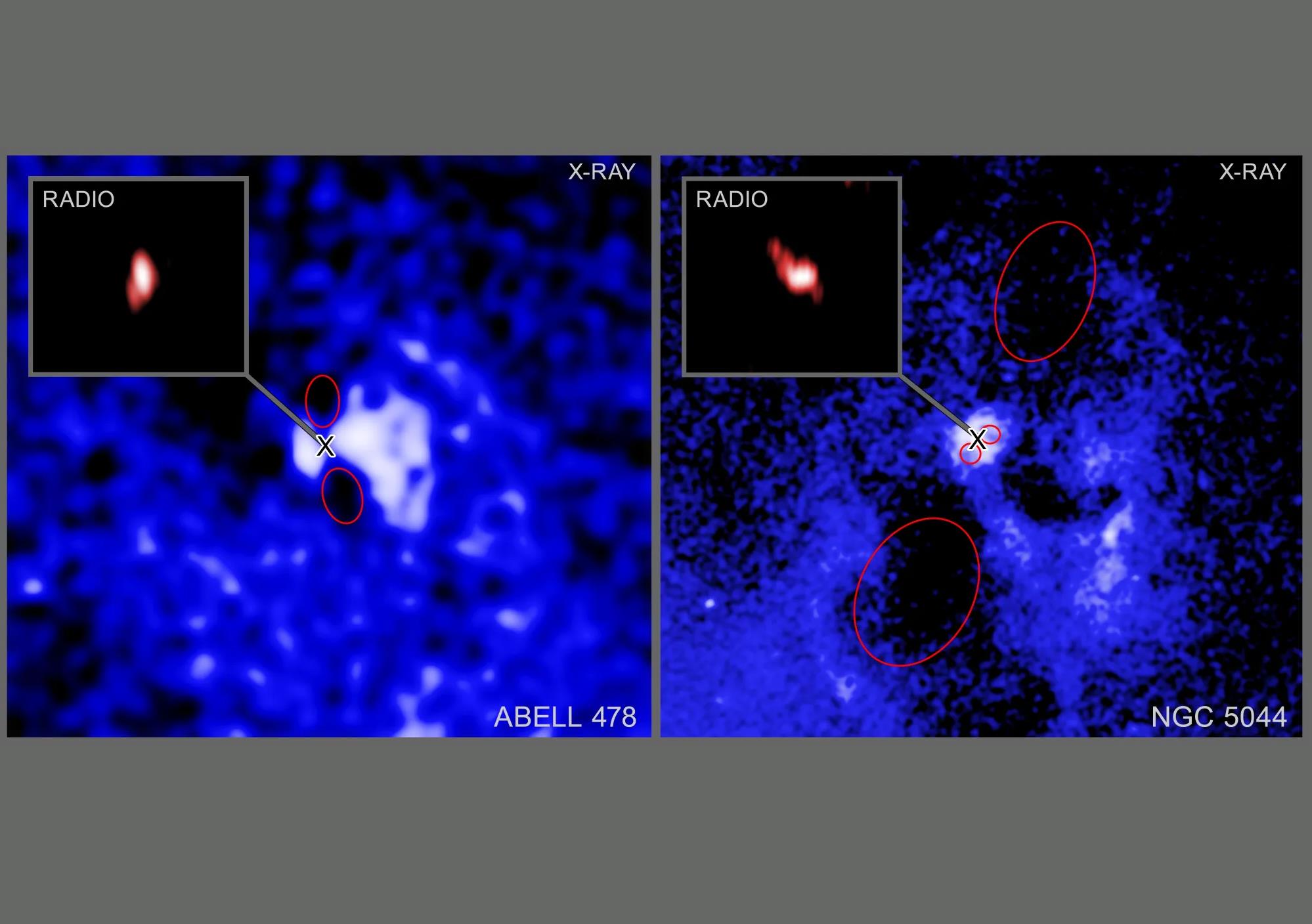
The two black holes inside Abell 478 and NGC 5044 (X) as well as the large cavities they once carved into the surrounding space by the power of jet streams (circled in red) - Photo: NASA
Comparison between Chandra and VLBA images shows that the jets of the Abell 478 middle monster veer about 35 degrees, while the jets of the NGC 5044 middle black hole veer about 70 degrees.
In total, about one-third of the observed black holes showed a visible change in direction.
Some have even changed direction by nearly 90 degrees in just a million to tens of millions of years. These black holes are about 10 billion years old, so this change in direction is relatively quick.
The jets that black holes shoot out into space are actually the "burps" from their violent meals, often perpendicular to the plane of the black hole.
The change in direction that scientists observed suggests that the black hole itself may have changed, thereby changing the angle at which it fires these furious beams into space.
While powerful and terrifying, these beams are not death after all.
They actually pump strong energy into the inner and central regions of the galaxy, causing the hot gas of the galaxy to be continuously burned, unable to cool.
But this is what helps stimulate star formation and helps the galaxy grow.
Conversely, if the black hole changes direction too much, the area it previously bombarded will no longer be as hot as before, thereby slowing down the star formation process.
This discovery contributes to showing how central black holes affect the life of the galaxy they reside in, as well as the space around it and possibly some neighboring galaxies in the same cluster.
Source: https://nld.com.vn/phat-hien-16-sieu-lo-den-co-dai-dang-ban-pha-vu-tru-196240526082603579.htm





























![[Photo] National Assembly Chairman attends the seminar "Building and operating an international financial center and recommendations for Vietnam"](https://vphoto.vietnam.vn/thumb/1200x675/vietnam/resource/IMAGE/2025/7/28/76393436936e457db31ec84433289f72)






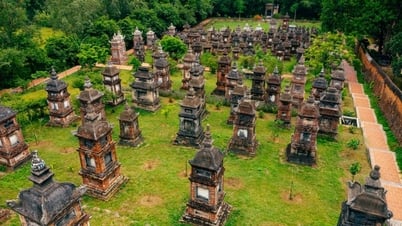

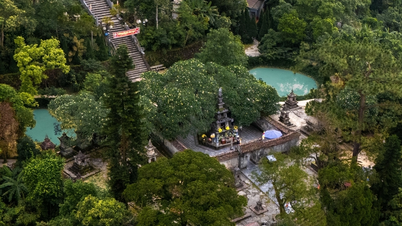


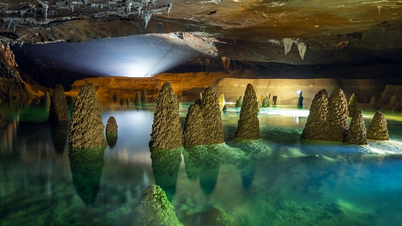



























































Comment (0)